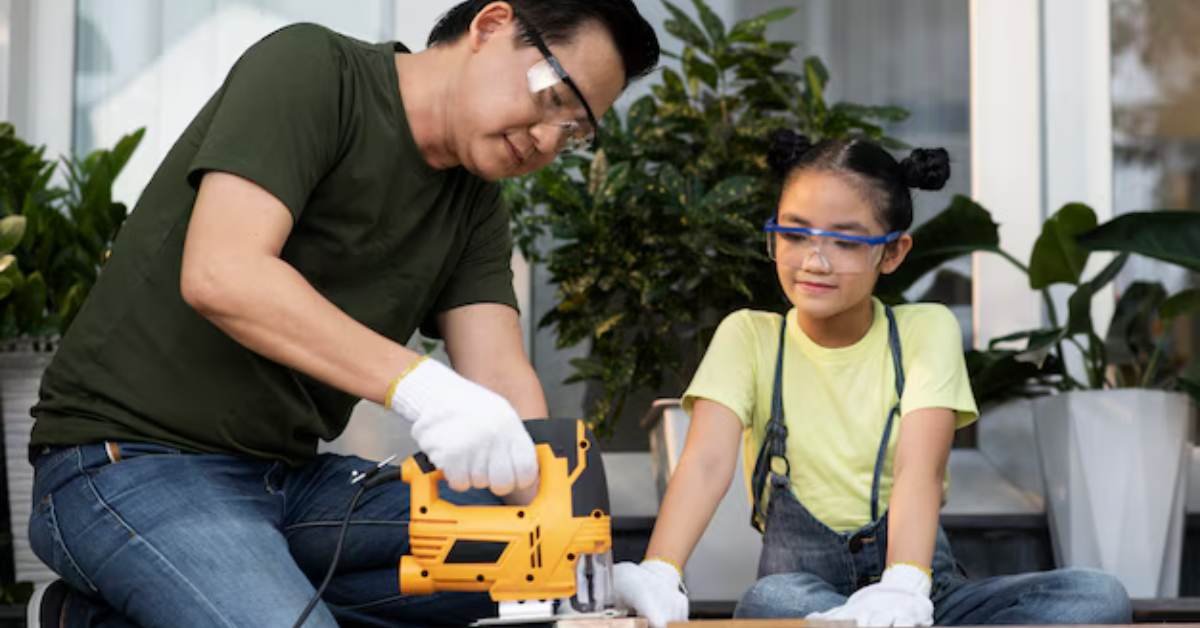Embarking on a DIY (Do It Yourself) project can be an exciting and rewarding experience. Whether you’re tackling home improvement, crafting, or repairs, the sense of accomplishment from completing a project on your own is unmatched.
However, safety should always be your top priority. With the proper precautions and preparations, you can ensure that your DIY endeavors are successful and safe.
This article will guide you through essential safety tips to keep in mind while completing your DIY projects.
Contents
1. Plan Your Project Thoroughly
Before diving into any DIY project, spend time planning it out.
- Research: Look for guides, tutorials, and videos relevant to your project. Understanding the steps involved can help you anticipate potential challenges and safety hazards.
- Gather Materials: List all the tools and materials you’ll need. Check for any safety gear required for the project.
- Set a Timeline: Allocate sufficient time to complete your project without rushing. Rushing can lead to mistakes and accidents.
2. Use Proper Safety Gear
Proper personal protective equipment (PPE) ensures safety during DIY projects. Depending on the nature of your project, this may include:
- Safety Glasses: Protect your eyes from flying debris, dust, and hazardous materials.
- Gloves: Use gloves to protect your hands from sharp objects, chemicals, and rough materials. Choose the appropriate type of glove for your project, whether it’s latex, nitrile, or leather.
- Masks: A dust mask or respirator is essential when sanding, painting, or working with materials that produce fumes or dust.
- Ear Protection: If you’re using loud tools, consider earplugs or earmuffs to protect your hearing.
3. Maintain a Clean Work Area
A cluttered workspace can lead to accidents. To ensure safety:
- Organize Tools and Materials: Keep your tools and materials organized and within reach. Store hazardous materials safely and out of reach of children.
- Clear Pathways: Remove any obstacles that could cause you to trip or fall.
- Good Lighting: Ensure your workspace is well-lit to minimize the risk of mistakes and accidents.
4. Understand Your Tools
Misusing tools is one of the leading causes of DIY injuries. Here are some tips for safe tool usage:
- Read Manuals: Familiarize yourself with the operating manuals of any tools you use.
- Inspect Tools Before Use: Check for any damage or wear and tear. Using damaged tools can lead to malfunctions and injuries.
- Use Tools for Their Intended Purpose: Avoid using tools for tasks they weren’t designed for. This can cause damage to the tool or injury to yourself.
- Unplug Tools When Not in Use: If you’re using electric tools, make it a habit to unplug them when you’re not using them or when changing attachments.
5. Use Proper Lifting Techniques
If your DIY project involves lifting heavy objects, using proper techniques is vital to avoid injury:
- Lift with Your Legs: Bend at your knees and keep your back straight when lifting heavy items. This technique reduces strain on your back.
- Get Help When Needed: Don’t hesitate to ask for assistance when lifting large or awkward items.
6. Work at Your Own Pace
Take your time while working on your project. Here are some tips to help you stay focused and safe:
- Avoid Distractions: Turn off your phone or keep it away from your workspace to minimize interruptions.
- Take Breaks: Regular breaks can help you stay focused and prevent fatigue. A tired worker is more prone to accidents.
7. Know When to Ask for Help
Some projects may be beyond your skill level or require specialized knowledge. If you find yourself in a situation where you’re unsure, don’t hesitate to ask for help or hire a professional.
- Consult Experts: Whether it’s a friend with experience or a professional, getting advice can help you complete your project safely.
Conclusion
Completing a DIY project can be a fulfilling experience, allowing you to express creativity and improve your living space. However, safety must always come first.
By planning your project thoroughly, using proper safety gear, maintaining a clean workspace, understanding your tools, using proper lifting techniques, working at your own pace, and knowing when to ask for help, you can ensure that your DIY endeavors are successful and safe.
FAQs
Q1: What should I do if I get injured during a DIY project?
A1: If you sustain an injury, assess the severity first. For minor cuts or bruises, clean and bandage the wound. If you experience severe injuries, such as deep cuts or broken bones, seek medical attention immediately.
Q2: Are there specific safety tips for using power tools?
A2: Yes, always wear safety glasses and ear protection, keep your workspace tidy, and ensure you understand how to operate the tool correctly. Unplug or remove batteries when changing accessories.
Q3: How can I avoid chemical exposure during DIY projects?
A3: Always work in a well-ventilated area, use appropriate PPE like gloves and masks, and read the labels on chemicals for safety instructions.
Q4: Is it safe to work alone on DIY projects?
A4: While many projects can be done alone, having someone nearby is safer, especially for larger or more complex tasks. They can assist in case of an emergency.
Q5: What should I do with leftover materials?
A5: Properly store materials for future projects or dispose of them according to local regulations. Many materials can be recycled, so check with your local recycling program.

